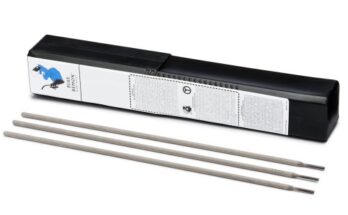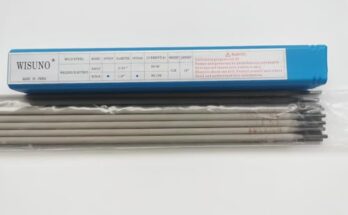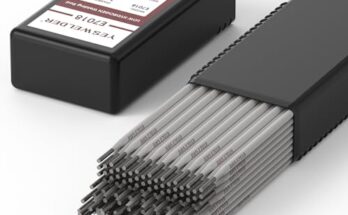Need to tackle a tough welding job? Understanding the right materials is key. This guide will teach you everything about 316 SS welding rod, helping you choose the best one for your project.
316 stainless steel, also known as 316L stainless steel (the “L” denoting a low carbon content),
is an austenitic chromium-nickel stainless steel alloy. This means it’s resistant to corrosion, heat, and extreme temperatures. Its composition—primarily iron, chromium, nickel, and molybdenum—gives it superior properties compared to other stainless steel grades. The addition of molybdenum is crucial; it significantly enhances the resistance to pitting and crevice corrosion, particularly in chloride-containing environments like saltwater. Think of it like this: regular stainless steel might rust slightly near the ocean; 316 stainless steel practically shrugs it off. This makes it ideal for applications where corrosion is a major concern, from marine environments to chemical processing plants. Its versatility makes it a favored material in many industries.
The Importance of Molybdenum in 316 SS
The inclusion of molybdenum sets 316 SS apart. This element acts as a potent deterrent against chloride ion attacks, the primary cause of pitting and crevice corrosion. Imagine a microscopic hole forming in the metal – chloride ions can easily penetrate ordinary stainless steel through these openings and lead to localized corrosion. Molybdenum strengthens the passive layer on the steel’s surface, making it far more resistant to such attacks. This enhanced resistance is what makes 316 SS suitable for demanding applications where other stainless steel grades would fail. For example, in chemical plants handling acidic or saline solutions, 316 SS consistently outperforms 304 stainless steel due to its superior resistance to these aggressive environments.
Applications of 316 Stainless Steel
The superior corrosion resistance of 316 stainless steel makes it a go-to material in diverse applications. This includes: marine equipment (boat parts, underwater structures), food processing (where hygienic materials are necessary), chemical processing (handling various chemicals), medical devices (implants, surgical instruments), and architectural components (where longevity and aesthetic appeal are needed). It’s chosen for its ability to withstand harsh conditions while maintaining its structural integrity and appearance. The strength and durability of 316 SS, combined with its corrosion resistance, make it a cost-effective choice in the long run, even if the initial cost might be slightly higher than other materials.
Choosing the Right 316 SS Welding Rod
Factors to Consider When Selecting a 316 SS Welding Rod
Selecting the right 316 SS welding rod depends on several critical factors. First, consider the thickness of the base metal. Thicker materials require rods with a larger diameter for effective penetration and fusion. Secondly, the type of welding process is crucial. Gas Metal Arc Welding (GMAW), Gas Tungsten Arc Welding (GTAW), and Shielded Metal Arc Welding (SMAW) each have specific requirements for rod selection. Finally, the specific application and environmental conditions also play a vital role. For instance, a rod for marine applications needs higher resistance to saltwater corrosion than one used for indoor applications. A proper match ensures optimal weld quality and durability.
Different Types of 316 SS Welding Rods
Several types of 316 SS welding rods are available, each designed for different welding processes and applications. For example, solid wire rods are commonly used in GMAW, offering ease of use and high deposition rates. Flux-cored wires, also suitable for GMAW, incorporate flux that aids in shielding the weld from atmospheric contamination. Electrodes for SMAW come in various sizes and coatings, each designed to deliver specific weld characteristics. Choosing the right type ensures a strong, corrosion-resistant weld, perfectly suited to the intended purpose. Understanding these differences is essential for achieving professional-quality results. It’s also worth researching manufacturers’ specifications to ensure compatibility with your specific welding equipment and processes.
Comparing 316 SS Welding Rods with Other Stainless Steel Rods
316 SS welding rods offer superior corrosion resistance compared to 304 SS welding rods, particularly in chloride-rich environments. While 304 SS is suitable for many applications, 316 SS provides an extra layer of protection against pitting and crevice corrosion. This is crucial for applications exposed to saltwater, chemicals, or other corrosive agents. The higher molybdenum content is the key differentiator, enhancing the overall durability and longevity of the weld. However, 316 SS welding rods might be slightly more expensive than 304 SS rods, reflecting the added value of the enhanced corrosion resistance. The choice often comes down to balancing cost with the required level of corrosion protection.
316L vs. 316 SS Welding Rods: What’s the Difference?
Understanding the “L” Designation in 316L
The “L” in 316L indicates a low-carbon version of 316 stainless steel. This low-carbon content minimizes the risk of sensitization—a phenomenon where chromium carbides precipitate along grain boundaries, reducing corrosion resistance in specific temperature ranges. Think of it as protecting the steel’s internal structure against weakening. While both 316 and 316L are highly corrosion-resistant, 316L is generally preferred for applications involving welding, particularly in thicker sections where heat-affected zones might be susceptible to sensitization. The low-carbon content makes it a safer and more reliable choice for applications demanding superior corrosion resistance under challenging conditions.
Choosing Between 316 and 316L for Your Project
The decision between 316 and 316L often depends on the specific application and welding process. For thinner materials, 316 might suffice, but for thicker materials and where high-temperature exposure is anticipated, 316L is usually recommended. The slightly higher cost of 316L is usually outweighed by its superior resistance to sensitization and the reduced risk of cracking or corrosion issues over time. Remember to consult welding guides and standards to find the best fit for your project. In some situations, the added cost and effort in selecting 316L are minimal compared to the potential problems caused by selecting the incorrect type of welding rod.
Practical Applications: When to Choose Each Grade
316 SS finds its place in applications where general corrosion resistance is paramount, while 316L is selected for situations requiring resistance to intergranular corrosion after welding. Examples include chemical processing equipment or marine components where prolonged exposure to harsh environments requires maximum protection. 316L is frequently used in medical implant manufacturing where absolute reliability and biocompatibility are essential. The improved weldability of 316L reduces the risk of defects, resulting in stronger, more reliable welds that can withstand years of service.
Welding Techniques with 316 SS Welding Rods
Gas Metal Arc Welding (GMAW) with 316 SS
GMAW, or MIG welding, is a popular technique for joining 316 SS due to its speed and efficiency. Using a continuous feed of solid or flux-cored wire, GMAW produces high-quality welds. Proper shielding gas selection (typically argon or a mixture of argon and CO2) is essential to protect the weld pool from atmospheric contamination. Parameter adjustments, such as voltage, wire feed speed, and travel speed, are crucial for achieving good penetration and preventing defects. Experience and practice are key to mastering GMAW with 316 SS to produce consistent, strong welds. Using the right shielding gas and carefully controlling parameters is vital for obtaining the best results.
Gas Tungsten Arc Welding (GTAW) with 316 SS
GTAW, or TIG welding, is known for its precision and control. It utilizes a non-consumable tungsten electrode to create a precise weld. This process is often preferred for critical applications demanding high-quality welds and minimal distortion. Pure argon is typically used as a shielding gas to protect the weld pool. The process requires a skilled welder to master the technique and achieve consistent results. However, the superior quality and control offered by GTAW make it ideal for intricate designs and situations where high-quality is non-negotiable. The ability to precisely control the heat input makes GTAW suitable for thin materials.
Shielded Metal Arc Welding (SMAW) with 316 SS
SMAW, or stick welding, is a versatile and portable method. It employs a coated electrode that provides both shielding and filler material. SMAW is relatively less expensive than GMAW or GTAW but may result in a less refined weld appearance. Careful electrode selection and proper technique are essential for preventing porosity and ensuring weld quality. While it lacks the precision of GTAW and the speed of GMAW, its simplicity and portability make it a practical option for many situations. Understanding the limitations and benefits of SMAW is key to utilizing it effectively.
Safety Precautions When Welding 316 SS
Essential Safety Equipment for Welding 316 SS
Welding 316 SS, like any welding process, requires stringent safety measures. Essential equipment includes a welding helmet with appropriate shade lenses to protect against intense UV and IR radiation. Heavy-duty welding gloves are necessary to protect hands from burns and sparks. Protective clothing, including a long-sleeved shirt, pants, and closed-toe shoes, is mandatory. A respirator or breathing mask is essential to prevent inhalation of welding fumes, particularly chromium fumes, which are known carcinogens. Regular safety training is paramount to prevent accidents and injuries.
Understanding the Hazards of Welding Fumes
Welding 316 SS produces fumes containing chromium, nickel, and other elements that can be harmful if inhaled. Prolonged exposure to these fumes can increase the risk of respiratory problems and other health issues. Therefore, using proper ventilation and respiratory protection is crucial. Regular medical check-ups are recommended for welders who regularly work with stainless steel. Understanding the potential hazards and taking the necessary precautions are essential for protecting your long-term health. Investing in high-quality respiratory equipment is an investment in your well-being.
Proper Ventilation and Workspace Setup
Proper ventilation is critical to minimize the risks associated with welding fumes. Working in a well-ventilated area or using local exhaust ventilation systems can significantly reduce the concentration of harmful fumes. Ensure the workspace is well-lit and free of obstacles to prevent accidents. Organizing tools and materials efficiently minimizes the risk of tripping hazards or unintentional contact with hot surfaces. A safe and organized workspace not only protects you from injury but also enhances productivity and quality of work. Prioritizing workplace safety translates directly to better results.
Post-Weld Considerations for 316 SS
Cleaning and Finishing the Weld
After welding 316 SS, cleaning the weld is essential to remove any spatter or slag. This can be done using a wire brush or grinder. The level of cleaning will depend on the intended application. For aesthetic purposes, further finishing may be required to achieve a smooth, polished surface. Proper cleaning not only enhances the appearance of the weld but also prevents corrosion and ensures the weld’s integrity. Thorough cleaning is a fundamental step in ensuring the longevity of the weld.
Heat Treatment and Annealing (If Necessary)
Depending on the application, heat treatment or annealing might be necessary to relieve stress and improve the weld’s properties. This process involves carefully heating and cooling the weld to control its microstructure. Incorrect heat treatment can weaken the weld or introduce undesirable properties. The need for heat treatment depends on the thickness of the material and the specific requirements of the application. Consult relevant welding standards and guidelines to determine the appropriate heat treatment protocol. Improper heat treatment can compromise weld integrity; professional advice might be necessary.
Inspection and Testing of the Weld
After welding, inspecting the weld is critical to ensure its quality and integrity. Visual inspection can identify surface flaws or imperfections. Further testing methods such as radiographic inspection (RT), ultrasonic testing (UT), or dye penetrant testing (PT) might be used to detect internal defects. The level of inspection will vary depending on the criticality of the weld. Proper inspection and testing procedures are essential to ensure a reliable and safe weld, meeting the specific requirements of the application. Thorough inspection is a responsible step in ensuring safety.
Cost and Availability of 316 SS Welding Rods
Pricing and Factors Affecting the Cost
The cost of 316 SS welding rods varies depending on several factors including the size and type of the rod, the manufacturer, and the quantity purchased. Bulk purchases often result in lower per-unit costs. The type of welding process (e.g., solid wire, flux-cored wire, electrode) also impacts pricing. Higher-quality rods with enhanced properties or specialized coatings may command higher prices. Budgeting appropriately and considering these factors is crucial for efficient procurement.
Sources and Suppliers for 316 SS Welding Rods
316 SS welding rods are widely available from various suppliers, including welding supply stores, online retailers, and metal distributors. Many manufacturers offer their own brands and product lines, catering to diverse welding applications. It’s beneficial to compare prices and product specifications from different suppliers to find the most suitable option for your needs. Researching reputable suppliers is essential to ensure quality and reliability. Online forums and welding communities can provide valuable insights into the reputation of various suppliers.
Comparing Prices and Finding the Best Deals
Before purchasing, comparing prices from different suppliers is always recommended. Consider not only the initial cost per rod but also factors like shipping costs, minimum order quantities, and return policies. Looking for discounts or bulk purchasing options can save significant money, especially for large projects. Choosing a supplier that offers reliable delivery and excellent customer service is vital for a smooth procurement experience. Consider reviews and online feedback when selecting a supplier to avoid potential issues.
Frequently Asked Questions
What is 316 ss welding rod best for?
316 SS welding rods are ideal for applications demanding high corrosion resistance, especially in chloride-containing environments. This includes marine applications, chemical processing, food processing, and medical devices. Their superior resistance to pitting and crevice corrosion makes them a reliable choice for welds exposed to harsh conditions. Learn more about the specific applications of 316 SS.
What are the differences between 304 and 316 stainless steel welding rods?
The primary difference lies in the addition of molybdenum to 316 stainless steel. This element significantly enhances its resistance to pitting and crevice corrosion, particularly in chloride-rich environments. 304 stainless steel lacks this enhanced corrosion resistance. Choosing between 304 and 316 depends on the specific application and the level of corrosion protection required.
How do I choose the right size 316 ss welding rod?
Rod size selection depends on the thickness of the base metal. Thicker metals necessitate larger diameter rods for adequate penetration and fusion. The chosen welding process also influences the appropriate rod size. Consult welding handbooks and manufacturer specifications for guidelines on selecting the correct rod size for specific applications.
What are the safety precautions when welding with 316 ss?
Always wear appropriate PPE, including a welding helmet with correct shade, welding gloves, protective clothing, and a respirator to prevent inhalation of harmful welding fumes. Ensure proper ventilation and a clean workspace. Regular safety training is essential for responsible welding practices. Learn more about safe welding techniques.
What kind of filler metal should I use with 316 ss?
Always use a filler metal that is compatible with 316 SS, such as another 316 or 316L stainless steel filler. Using an incompatible filler can result in weak, brittle, and corrosion-prone welds. Consult welding codes and standards to determine the appropriate filler metal for specific applications.
Can I use 316 ss welding rods for all types of welding?
While 316 SS rods are versatile, the best welding process depends on the specific application and materials involved. GMAW, GTAW, and SMAW can all be used with 316 SS, but the choice involves considering factors like material thickness, weld quality requirements, and welder experience.
What is the shelf life of 316 ss welding rods?
The shelf life of 316 SS welding rods depends on storage conditions. Rods stored in a cool, dry place, away from moisture and contaminants, will maintain their quality for an extended period. Check manufacturer recommendations for specific shelf-life details. Proper storage ensures the quality of your welding rods.
Final Thoughts
Selecting the right 316 SS welding rod is crucial for achieving strong, durable, and corrosion-resistant welds. Understanding the different types of rods, their properties, and appropriate welding techniques is key to ensuring a successful project. Remember to prioritize safety by using appropriate personal protective equipment and adhering to safe welding practices. By carefully considering these factors and following best practices, you can confidently tackle your next welding project with 316 SS welding rods. So, gather your materials, prepare your workspace, and confidently begin your next welding endeavor!


